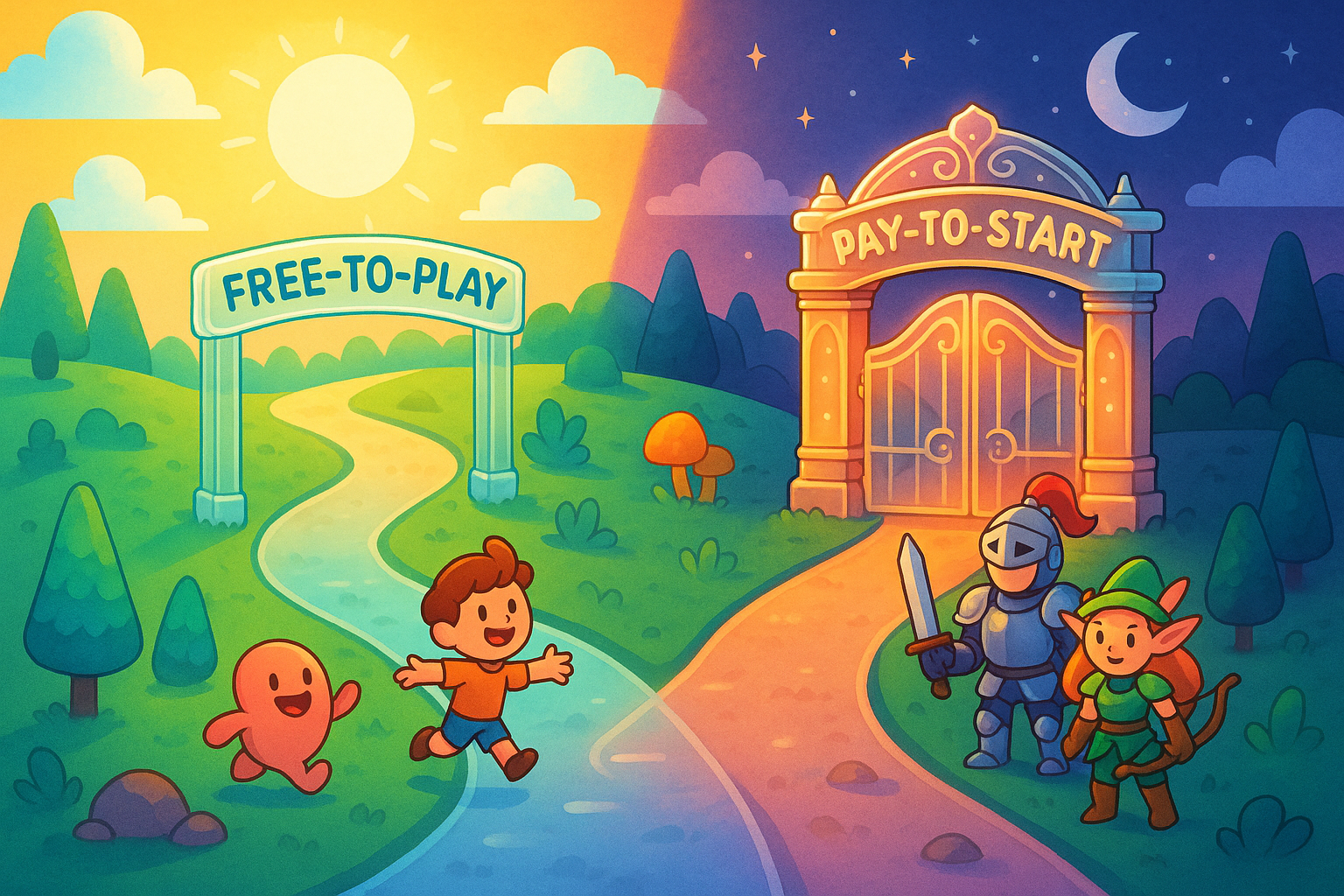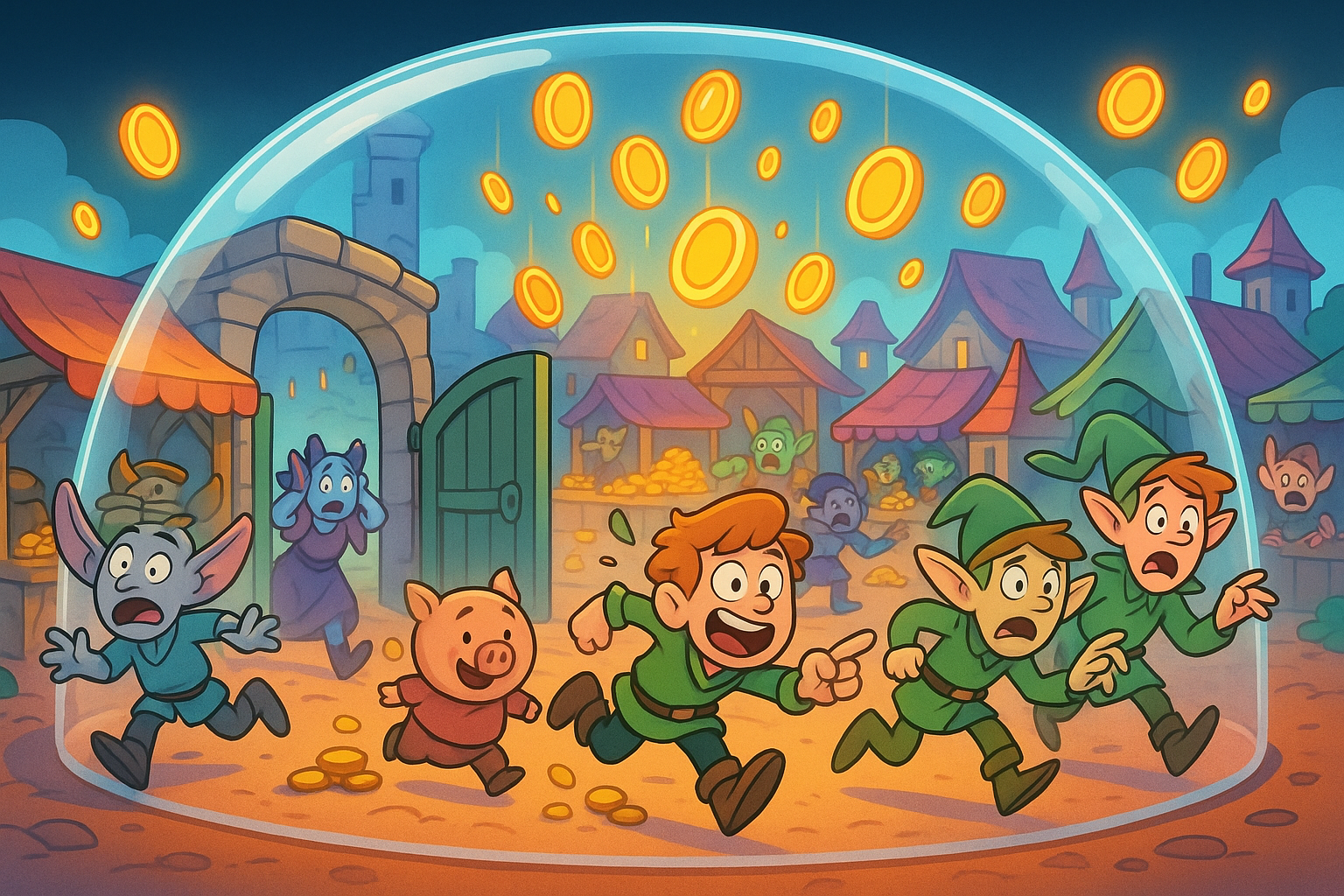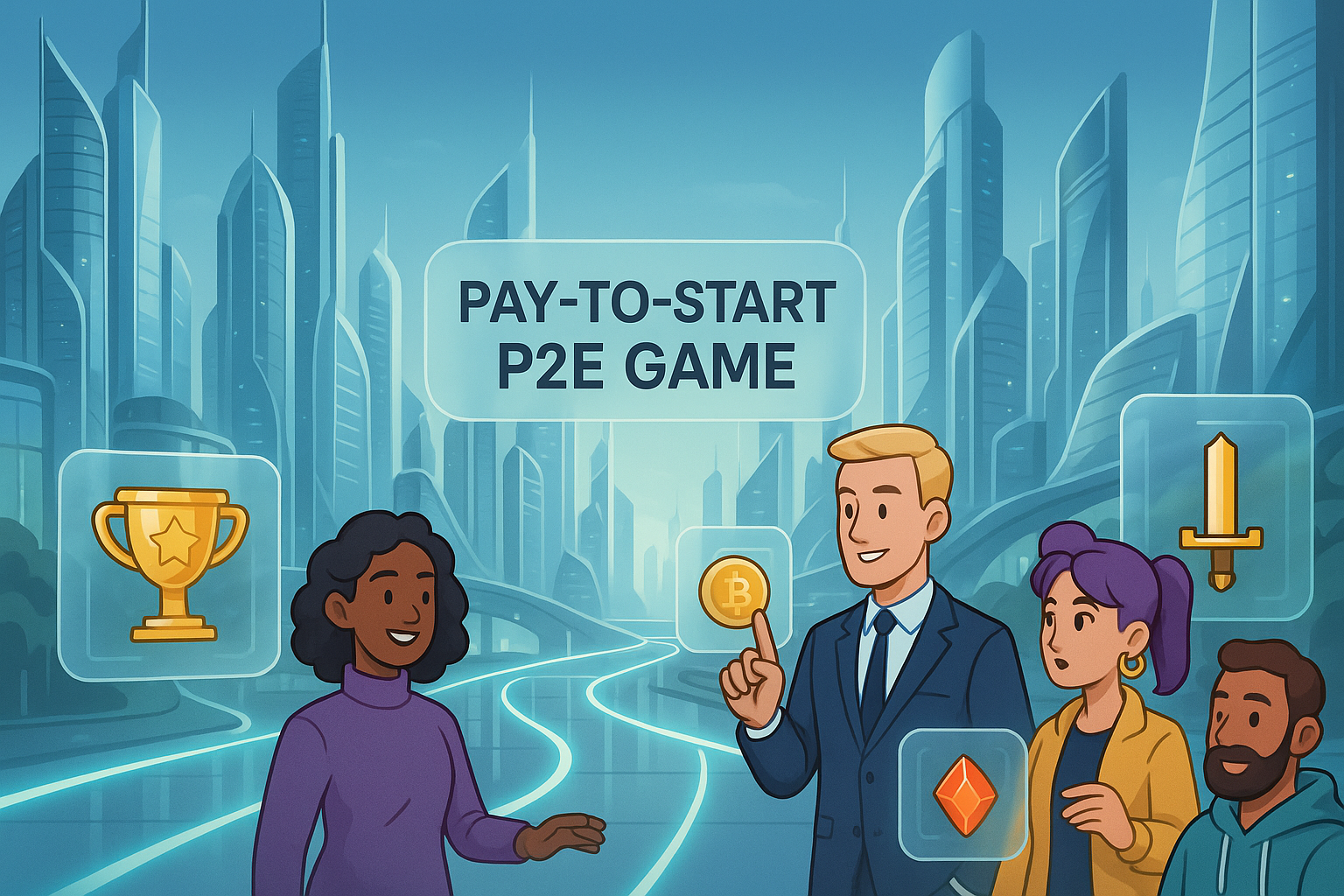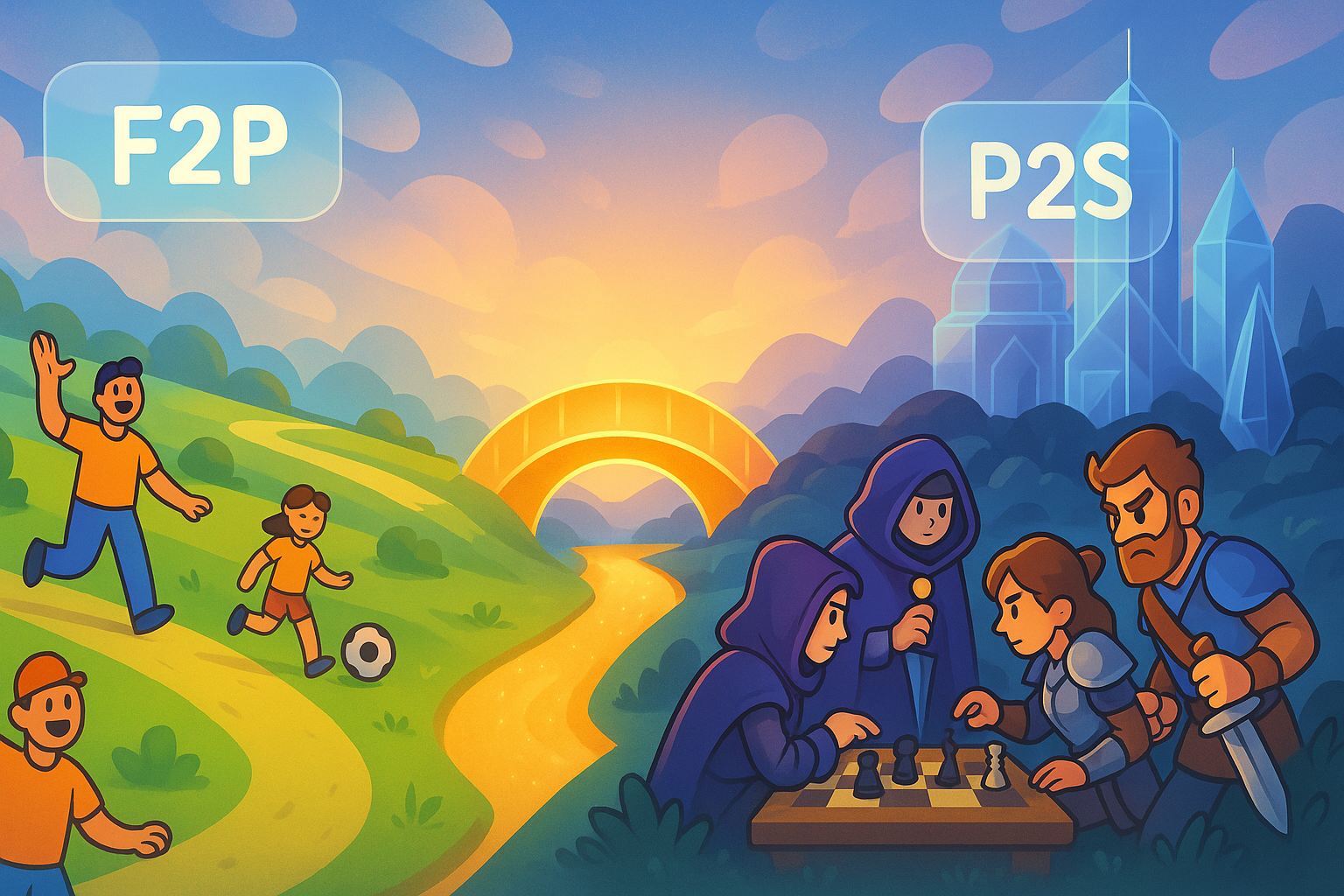Free-to-Play vs. Pay-to-Start: Which P2E Model is Right for You?
The world of Play-to-Earn (P2E) gaming has exploded in recent years, promising a revolutionary shift in how we interact with digital entertainment. Beyond just the fun of gaming, P2E introduces tangible ownership and economic opportunities, allowing players to earn real value through their in-game efforts and assets. However, not all P2E games are created equal, especially when it comes to their economic models. The fundamental fork in the road for both players and developers often lies between the Free-to-Play (F2P) and Pay-to-Start (P2S) approaches. Each model presents a unique set of advantages, disadvantages, and implications for sustainability, player experience, and overall risk. Understanding these differences is crucial for anyone looking to dive into the blockchain gaming ecosystem.
At its core, the choice between F2P and P2S defines the initial barrier to entry and, consequently, the entire economic flow of a P2E game. Are you looking for a low-risk way to explore the potential of Web3 gaming, or are you ready to invest upfront for what promises a deeper, potentially more rewarding experience? This article delves into the nuances of both models, helping you decide which path aligns best with your gaming philosophy and financial comfort.

The Appeal of Free-to-Play (F2P) P2E: Open Gates, Open World
The Free-to-Play model is a familiar concept in traditional gaming, and its transition to P2E brings a powerful promise: anyone can join without an initial financial commitment. In a P2E context, this means you can often download the game, create an account, and start playing to earn tokens or NFTs almost immediately, without needing to buy a character, land, or any other starter pack.
Advantages for Players and Developers:
- Low Barrier to Entry: This is arguably the most significant advantage. F2P democratizes access to blockchain gaming, allowing a massive audience, including those new to crypto or with limited disposable income, to participate. It's an excellent way to dip your toes into the P2E waters without financial risk.
- Mass Adoption Potential: F2P games can achieve viral growth quickly. With no upfront cost, the potential for a large, rapidly expanding player base is immense, leading to network effects and broader awareness for the project.
- Risk-Free Exploration: For players, it offers a zero-risk way to experience the game, understand its mechanics, and decide if they enjoy it before considering any real investment.
- Community Growth: A lower barrier can lead to a larger and more diverse community, fostering a lively ecosystem of players and discussions.
The Hidden Costs and Challenges of F2P P2E:
Despite its attractive façade, F2P P2E faces significant hurdles, particularly concerning sustainability and game quality. Many early F2P P2E projects struggled with these issues, leading to a more cautious approach in the current market.
- Sustainability and Tokenomics: The biggest challenge for F2P P2E games is maintaining a sustainable economy. If everyone can earn without investing, the supply of in-game tokens or NFTs can quickly outpace demand, leading to rapid inflation and devaluation of earnings. This often results in a "race to the bottom" where early adopters might profit, but later players find their efforts yield diminishing returns.
- Quality Concerns and Grind: To mitigate the economic imbalance, F2P P2E games often require an extensive, repetitive "grind" to earn anything substantial. This can lead to less engaging gameplay and can attract players purely for speculative earning rather than genuine enjoyment, diluting the community experience. Moreover, a low barrier can attract lower-quality projects, bot farms, and even scams, as the cost of entry for malicious actors is minimal.
- Security Risks: Easier access can sometimes translate to easier targets for exploits or pump-and-dump schemes, especially if the game's economy is not robustly designed.
- Diluted Community: While a large community is a benefit, it can also be diluted by players who aren't genuinely invested in the game's long-term success, leading to less engagement and potentially more toxic environments.

The Rigor of Pay-to-Start (P2S) P2E: Gated Gardens, Valued Assets
The Pay-to-Start model, often requiring players to purchase an initial NFT (like a character, plot of land, or starter pack) before they can even begin playing and earning, presents a stark contrast to F2P. This financial barrier shapes the entire ecosystem, attracting a different type of player and allowing for different design philosophies.
Advantages for Players and Developers:
- Higher Quality and Deeper Gameplay: P2S games often have more significant upfront funding, allowing developers to invest heavily in game design, graphics, and innovative mechanics. This typically translates to a richer, more engaging, and less repetitive gameplay experience, focusing on fun first and earning second.
- Sustainable Tokenomics: The initial investment from players directly contributes to the game's treasury, providing a stable foundation for rewarding players and funding ongoing development. This can lead to more robust and sustainable tokenomics, as the earning potential is often tied to the scarcity and utility of owned assets.
- Dedicated and Invested Player Base: Players who have invested financially are generally more committed to the game's success and longevity. This fosters a more passionate, engaged, and loyal community, actively participating in governance, contributing to the ecosystem, and providing valuable feedback.
- Exclusive Content and Asset Value: P2S often means players own valuable, unique NFTs that can appreciate over time based on scarcity, utility, and market demand. This sense of ownership and potential asset appreciation is a significant draw.
- Reduced Spam and Botting: The financial barrier naturally deters casual bot farms and malicious actors, leading to a cleaner, fairer in-game environment.
The Risks and Limitations of P2S P2E:
While P2S offers significant advantages in quality and sustainability, it comes with a higher degree of risk and a narrower appeal.
- Significant Financial Barrier: The most obvious drawback is the initial investment, which can range from tens to thousands of dollars. This excludes a large portion of the gaming population and can be a significant deterrent for many.
- High Investment Risk: Players are essentially investing in a digital asset. The value of these NFTs can be highly volatile, subject to market fluctuations, game popularity, and the overall health of the crypto market. There's a real risk of losing a substantial portion, or even all, of the initial investment if the game fails or its assets depreciate.
- Complexity and Technical Knowledge: P2S games often require a deeper understanding of crypto wallets, NFT marketplaces, blockchain transactions, and sometimes even specific DeFi protocols, which can be daunting for newcomers.
- Limited Audience: The higher barrier means a smaller potential player base compared to F2P, potentially limiting network effects and overall reach.
- Fear of Missing Out (FOMO): The allure of high potential returns can sometimes lead players to make impulsive or overly risky investments without adequate research.

Comparing the Two Models: Which Path is Right for You?
The choice between F2P and P2S ultimately boils down to individual preferences, risk tolerance, and objectives within the P2E space.
- Target Audience: F2P aims for mass adoption, casual players, and those looking to explore without commitment. P2S targets dedicated gamers, crypto enthusiasts, and investors seeking deeper engagement and potential financial upside.
- Sustainability: P2S models generally have a more inherent path to sustainability due to the initial capital infusion and vested player interest. F2P P2E projects require incredibly clever tokenomics and strong engagement loops to prevent asset devaluation.
- Player Experience: P2S games often deliver a more polished, engaging, and innovative gameplay experience due to better funding. F2P can sometimes be criticized for repetitive gameplay designed primarily for earning, though this is evolving.
- Risk vs. Reward: F2P offers low financial risk but potentially lower individual earning potential (or requires a significant time investment). P2S carries a higher financial risk but offers the potential for greater returns and more valuable asset ownership.
- Community Dynamics: P2S communities tend to be more invested, passionate, and stable due to shared financial interest. F2P communities can be larger but sometimes suffer from a higher churn rate and less dedicated players.
The Rise of Hybrid Models and the Evolving Landscape
As the P2E industry matures, many developers are exploring hybrid models to combine the best aspects of both F2P and P2S. These models might offer a free-to-play base game with limited earning potential, while providing optional pay-to-start elements like NFT upgrades, premium passes, or exclusive content that unlock greater earning opportunities or enhance the gameplay experience. This approach seeks to lower the initial barrier while still ensuring economic sustainability and rewarding dedicated players.
The overall trend in Web3 gaming is also shifting. There's a growing emphasis on creating "fun-first" games that happen to have blockchain elements, rather than blockchain projects that happen to have a game attached. This focus on traditional game quality, combined with innovative P2E mechanics, is set to define the next generation of successful titles, regardless of their primary economic model.

Making Your Choice: Due Diligence is Key
Ultimately, the "right" P2E model for you depends on your individual goals and comfort level. If you're a newcomer to blockchain gaming or prefer a zero-financial-risk approach, F2P offers an excellent entry point to learn the ropes and experience the space. It’s perfect for casual exploration and understanding the mechanics without commitment.
If you're a seasoned gamer, a crypto enthusiast, or someone willing to take calculated risks for potentially higher rewards and a deeper experience, P2S might be more appealing. These games often promise higher production quality, more engaging gameplay, and the potential for significant asset appreciation, but always remember the inherent volatility and risk of any investment.
Regardless of the model, due diligence is paramount. Always research the development team, understand the game's whitepaper and tokenomics, assess the community engagement, and never invest more than you can afford to lose. The P2E landscape is rapidly evolving, and while opportunities abound, so do risks. By understanding the core differences between Free-to-Play and Pay-to-Start, you can make more informed decisions and navigate the exciting world of blockchain gaming with greater confidence.

